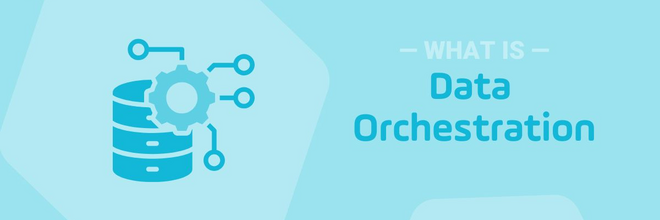Automated File Transfer: MFT and WLA Make the Perfect Pair
From data flows to workflows, managed file transfer (MFT) and workload automation (WLA) work together to orchestrate real-time data transfers between any environment, both internal and external to your network.

Automated file transfer brings together two mission-critical practices at the heart of every enterprise: workload automation (WLA) and managed file transfer (MFT). Corporate success is built on collaboration and connections, which means that businesses must find a way to connect their data points, people, and processes, not to mention trade partners and other business-to-business (B2B) providers.
According to Enterprise Management Associates (EMA), a leading industry analyst and consulting firm, most automation workflows include at least one file transfer task. Additionally, those file transfer tasks comprise at least 20% of scheduled jobs. There’s no denying that MFT and WLA are just meant to be together… like zeroes and ones, input and output, or copy and paste.
Let’s dive in and explore why MFT pairs so well with WLA. We’ll also discuss why most enterprises prefer a combined MFT/WLA software platform.
What is MFT File Transfer?
Managed file transfer is a type of enterprise-grade software or service that moves data from one system to another over a computer network. MFTs offer advanced capabilities, security, and control while also enabling multiple file transfer protocols like FTP, FTPS, SFTP, HTTP, and HTTPS.
Typical standalone file transfer software will:
- Centralize management of system-to-system file transfers.
- Check for errors and automatically remedy them.
- Offer basic encryption and role-based permissions, as well as logging, reporting, and auditing.
- Integrate with commonly used tools and applications.
There are four common types of managed file transfers:

- Internal data transfers allow data to flow safely and smoothly across the many internal systems of a single enterprise’s on-premises network. System-wide governance and observability allows administrators to understand who is sending data, what data is being sent, where data is being sent, and when data is being sent.
- External B2B data transfers let multiple organizations share data across external networks, including business partners, government agencies, and customers. This data is often confidential, proprietary, or personally identifiable. In other words, 100% dangerous if it lands in the wrong hands. External transfers require extra security measures, such as reverse proxies and highly secure demilitarized zone (DMZ) protocols.
- Private and public cloud data transfers, also known as multi-cloud data transfers, connect data that span major cloud service providers like AWS, Google Cloud, and Microsoft Azure, as well as cloud storage platforms like Dropbox, SharePoint, OneDrive, and Hadoop HDFS. Ideally, the data should stream from one object store to another without the need for intermediate storage.
- Hybrid IT data transfers enable data to move from on-premises systems to cloud systems, and back again. This kind of solution bridges a connectivity gap that’s traditionally been a challenge to overcome, without sacrificing data integrity or security.
Standalone MFT tools centralize the management of data movement, but they are often highly manual and disconnected from larger business workflows.
How Do MFT and WLA Work Together?
Whether you call it job scheduling, batch processing, or a service orchestration and automation platform (SOAP) — workload automation is the practice of using software to schedule and manage automated tasks related to IT processes and transactions.
Simply put, if MFT software improves upon basic file transfer tools, WLA takes it a few steps further.
Integrating MFT with a SOAP or WLA brings automation to your data transfers, giving you the option to orchestrate them in real-time and include them in broader business processes:
- Schedule file transfers within larger workflow automations, all from a single platform.
- Automatically trigger file transfers based on real-time system events or scheduled batches.
- Gain system-wide observability to understand who is sending data, what data is being sent, where data is being sent, and when data is being sent.
- Centrally manage, control, and monitor the movement of all data with reports and visual dashboards.
Why is MFT and WLA Integration Important?
When so much depends on successfully moving data, it’s crucial to simplify your file transfer automation. The best way to do that is by using one modern, easy-to-use platform to orchestrate your data flows and workflows together.
When your modern WLA platform offers a native MFT solution, you:
- Reduce costs by leveraging a single platform that connects your internal, external, and inter-cloud MFTs to the power of workload automation. Choosing a SaaS WLA/MFT solution can help reduce costs even further.
- Increase efficiency, productivity, and the speed by which you share data with partners.
- Trust that the data will get to the right place, without interruptions or security issues.
- Empower end-users with the ability to send data securely
Ultimately, an integrated MFT and WLA solution simply works across your entire ecosystem of applications and platforms.
Summary
Like containers and microservices, or CI and CD… It’s time to add MFT and WLA to your list of things that just belong together.
File transfers are already deeply embedded into most automated processes, so it only makes sense to look for an MFT solution that’s built into a broader workload automation solution. Together, they become an advanced automated file transfer software solution. Universal Automation Center (UAC) offers fully integrated internal MFT, external B2B MFT, hybrid cloud data transfer, and inter-cloud data transfer solutions to centralize control of data flows and workflows alike.
Start Your Automation Initiative Now
Schedule a Live Demo with a Stonebranch Solution Expert






